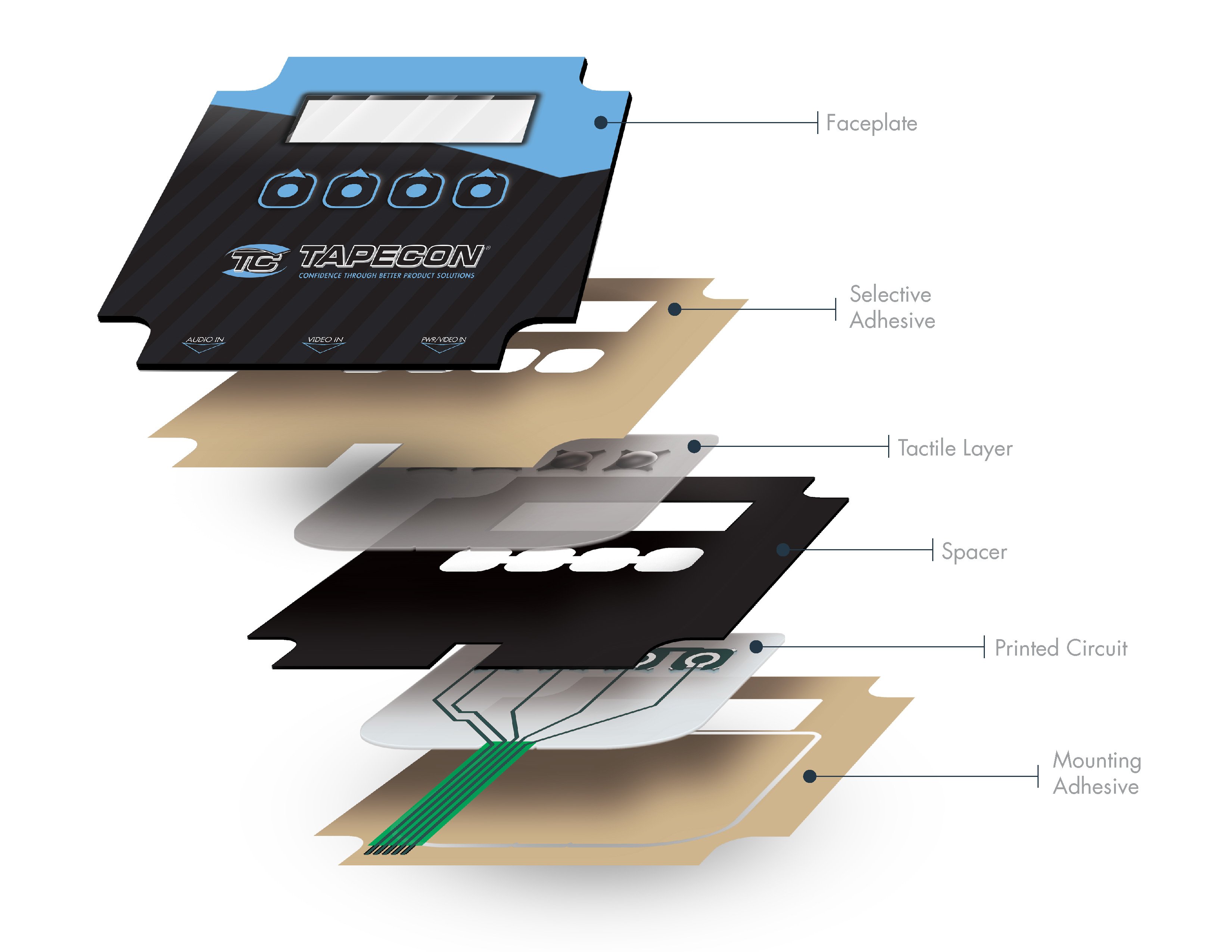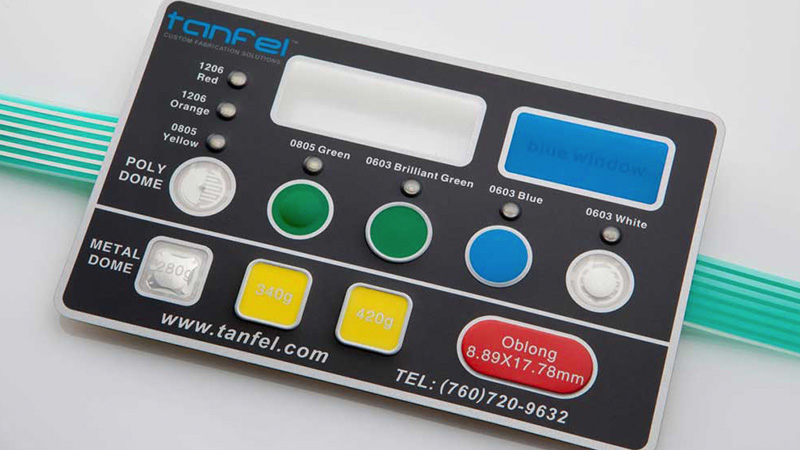Comprehending the Significance of Membrane Switches in Interface
Membrane buttons are integral elements in the style of reliable user interfaces, helping with not just performance however also boosting aesthetic appeal and user interaction. As we check out the future trends and different advantages linked with Membrane technology, it comes to be clear that these buttons are more than just elements; they represent a convergence of advancement and practicality.
What Are Membrane Switches?

The spacer layer, which contains sticky residential or commercial properties, permits the splitting up of the circuit layer from the overlay, making certain that the button stays in a non-activated state until pushed. When stress is related to the overlay, it compresses the spacer layer, connecting the space and finishing the circuit in the underlying layer. This design not just lowers the physical area required for traditional mechanical buttons however also boosts the toughness of the gadget, as Membrane buttons are normally resistant to dirt, wetness, and various other ecological elements.
Generally discovered in applications varying from customer electronics to medical tools, Membrane buttons are important to contemporary innovation, supplying a straightforward and efficient user interface that lines up with modern style needs.
Advantages of Membrane Switches
While many switch modern technologies exist, Membrane Switches deal distinct benefits that make them particularly preferable in numerous applications. One of the key advantages of Membrane buttons is their portable style, which permits space-saving implementations in tools where realty is limited. Their slim profile not only improves aesthetic appeal but additionally promotes lightweight building and construction.
Another considerable benefit is their resistance to environmental aspects. Membrane switches are normally secured against moisture, dirt, and impurities, making them perfect for use in requiring environments, such as medical gadgets and commercial tools. This resilience prolongs the life-span of the button, reducing maintenance expenses and boosting reliability.
Additionally, Membrane buttons can be tailored to fulfill specific design requirements, integrating special graphics and colors that boost customer communication. Their responsive responses alternatives can additionally be customized to provide a satisfying user experience. Additionally, Membrane buttons are cost-efficient, particularly in high-volume applications, as they can be generated successfully.
Applications in Different Industries

In the customer electronics sector, Membrane switches are prevalent in gadgets such as microwaves, washing machines, and remotes. Their tactile feedback and visual options boost individual experience while providing a smooth, modern appearance. Additionally, auto producers utilize Membrane switches in control panel controls and infomercial systems, where area is restricted, and individual involvement is important.
Furthermore, the commercial sector leverages Membrane buttons in control panels for machinery and tools, permitting instinctive operation in commonly harsh atmospheres. Their resistance to chemicals and moisture makes Home Page sure long life and dependability in these applications. On the whole, the adaptability of Membrane Switches contributes dramatically to their widespread use, making them indispensable in different technical domain names.
Design Considerations for Membrane Buttons

When creating Membrane buttons, several essential considerations need to be thought about to ensure ideal performance and individual experience. The choice of materials is critical; selecting durable, top quality substrates can enhance the switch's longevity and resistance to environmental factors such as dampness and temperature level variations.
Second of all, the style of the graphic overlay should prioritize quality and convenience of usage. Icons and text must be legible, and the layout needs to promote instinctive communication (membrane switches). Furthermore, responsive comments is necessary; integrating a tactile dome or various other devices can improve the user experience by providing physical verification of activation
One more essential variable is the button's electrical performance. Developers must make sure that the conductive traces are appropriately designed to minimize resistance and prevent signal interference. This entails assessing the required actuation Click This Link pressure and making sure compatibility with the electronic parts they will certainly interface with.

Future Patterns in Membrane Innovation
As modern technology remains to breakthrough, Membrane buttons are poised to advance considerably, driven by technologies in materials and making techniques. One emerging fad is the incorporation of innovative materials, such as conductive inks and versatile substratums, which improve resilience and lower the overall weight of Membrane buttons. These products not only improve the responsive response however additionally permit the design of buttons that can hold up against harsher environmental problems.
Additionally, the assimilation of touch-sensitive technologies is transforming standard Membrane Switches right into more interactive user interfaces. Capacitive touch sensors installed within Membrane button panels can give a more receptive and intuitive individual experience, straightening with the expanding need for streamlined, modern designs in consumer electronics.
Furthermore, improvements in printing methods, such as electronic and 3D printing, make it possible for rapid prototyping and customization of Membrane switches. This versatility permits suppliers to react quicker to market needs and customer choices.
Last but not least, sustainability is coming to be a substantial emphasis, with manufacturers exploring environmentally friendly materials and processes. As these trends unfold, the future of Membrane modern technology guarantees improved performance, aesthetic appeal, and ecological duty, strengthening their function in sophisticated interface across numerous sectors.
Final Thought
In conclusion, Membrane Switches represent an important component in the design of customer interfaces, integrating capability with aesthetic adaptability. As improvements in innovation continue, the evolution of Membrane switches is expected to further improve user interfaces, driving advancement and improving use in an increasingly intricate technological landscape.
Membrane buttons are integral elements in the layout of effective individual interfaces, promoting not only functionality however additionally enhancing aesthetic allure and user interaction.Membrane Switches offer as an essential component in different customer interfaces, facilitating a seamless interaction between individuals and digital devices.While various switch innovations exist, Membrane Switches deal distinctive advantages that make them particularly desirable in different applications.Additionally, Membrane buttons can be tailored to fulfill specific design requirements, incorporating distinct graphics and colors that improve individual communication.In verdict, Membrane Switches represent a crucial element in the style of customer interfaces, incorporating capability with visual versatility.
Comments on “Membrane Switches vs. Traditional Switches: What You Need to Know”